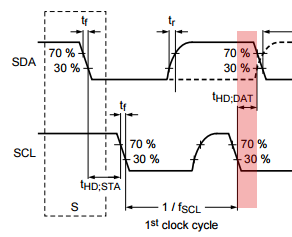Hi Expert,
My customer used the I2C standard mode(100KHz) to test TMP103. They want to verify the timing, but TMP103 and many TI datasheet didn't show the standard mode timing data. Do you have other TI document to mention it? Would you share it to me? Thanks!




